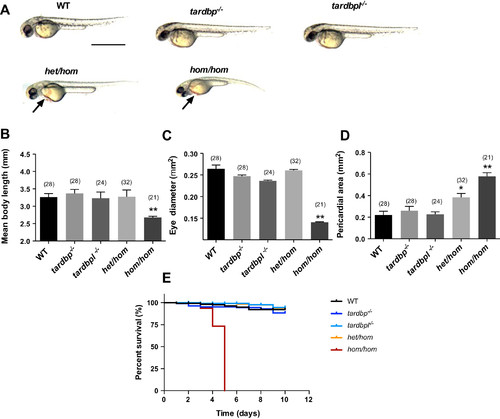Fig. 2
Significant morphological defects and reduced survival in hom/hom mutants. A: images of 48-h postfertilization larvae of the following different genotypes: wild type (WT), tardbp−/−, tardbpl−/−, het/hom, and hom/hom. Scale bar, 1 mm. Arrow indicates inflated pericardium in het/hom and hom/homlarvae. B–D: body length (B), eye diameter (C), and pericardial area (D) were measured for each treatment group. hom/hom mutants displayed significantly reduced body length and eye diameter and increased pericardial area (**P < 0.01). Additionally, het/hom larvae also displayed a significantly increased pericardial area (*P < 0.05). E: percent survival of WT, tardbp−/−, tardbpl−/−, het/hom, and hom/hommutant larvae tracked for 12 days. All hom/hom mutants died between 4 and 6 days (P < 0.01). Data are means ± SE; N = 2, n = 62. Numbers in parentheses indicate sample sizes.

